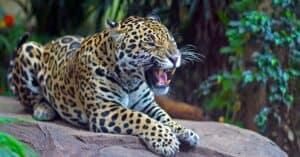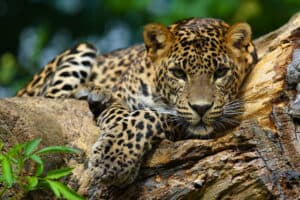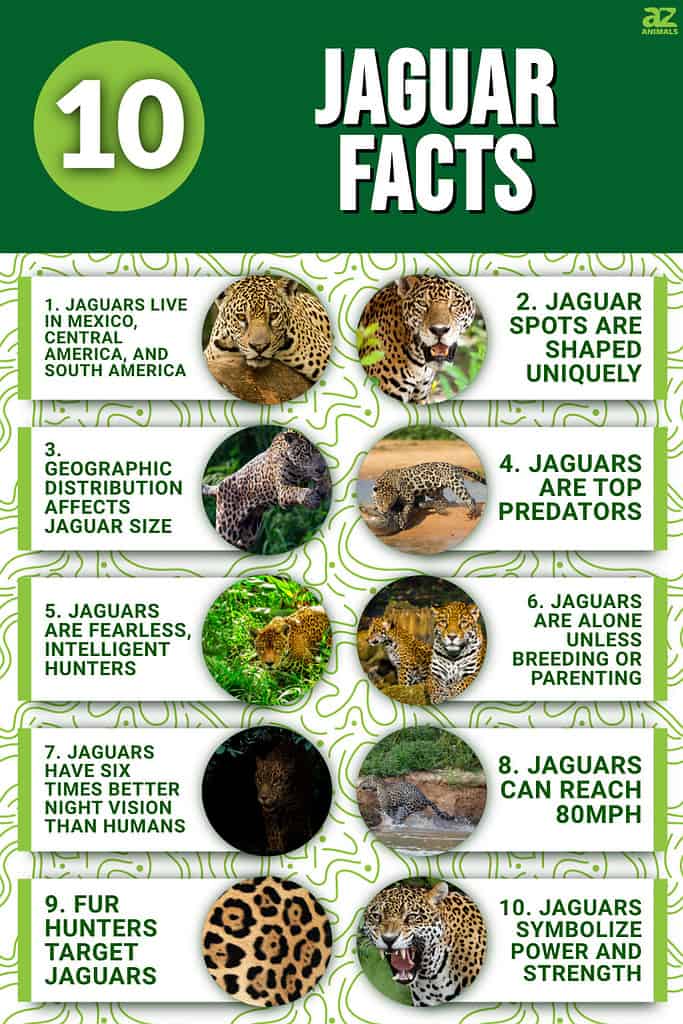
When discussing large cats, the jaguar must inevitably be mentioned. Only the Western Hemisphere is home to this gorgeous cat’s savage predatory nature. Learning about the jaguar is a necessity if you have a passion for felines, as it is among the most ferocious of all felids!
Here, we’ll look at 10 fascinating tidbits about jaguars. Let’s get started!
1. Jaguars Live In Mexico, Central America, and South America
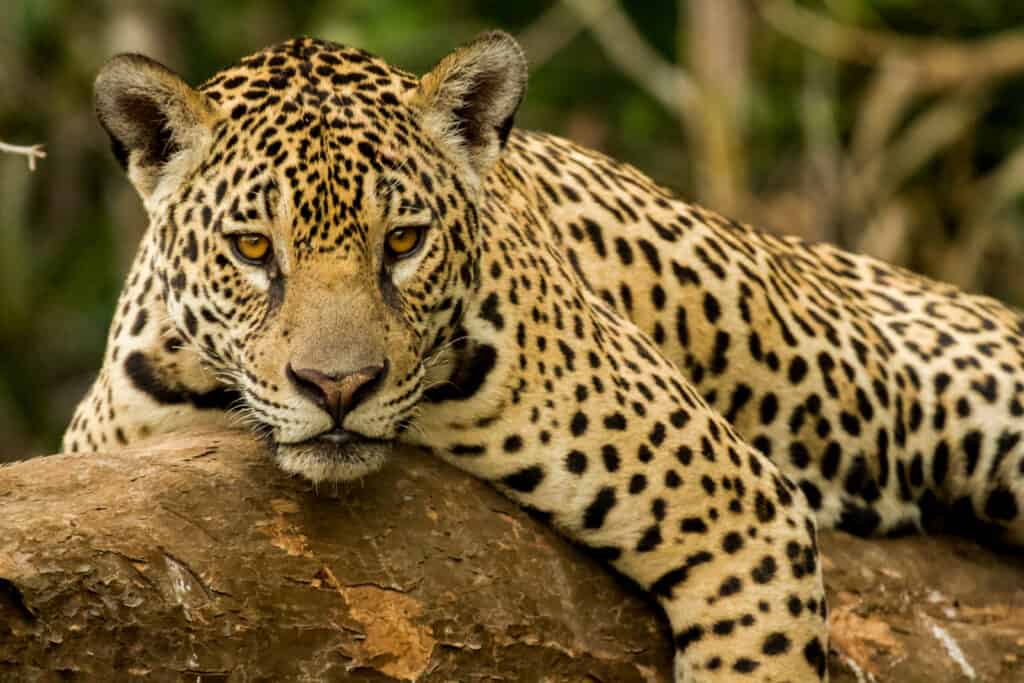
Jaguars prefer to live in dense forests close to water.
©Pedro Helder Pinheiro/Shutterstock.com
Jaguars are found in scattered populations in Mexico, Central America, and South America. They prefer to live in dense vegetation close to water; thus, habitats with rivers, streams, and wetlands are ideal. It’s safe to say that jaguar can make it in various environments, and marshes and tropical rainforests are ideal habitats for them.
2. Jaguar Spots Are Shaped Uniquely
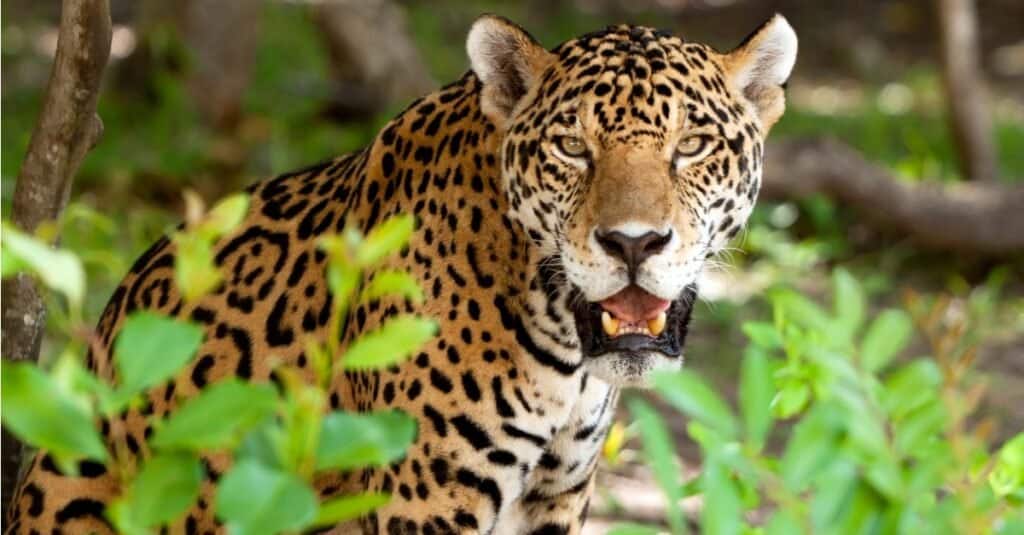
Rose-shaped markings are characteristic of jaguars.
©iStock.com/Patryk_Kosmider
Rose-shaped markings are characteristic of jaguars. These spots are called rosettes. Rosettes on jaguars are larger than those on leopards. Each jaguar may be recognized by the distinctive markings on its coat. Black rosettes are on the head, legs, and underside. The undersides of jaguars are typically white. Leopard rosettes are noticeably smaller than jaguar ones.
3. Geographic Distribution Affects Jaguar Size
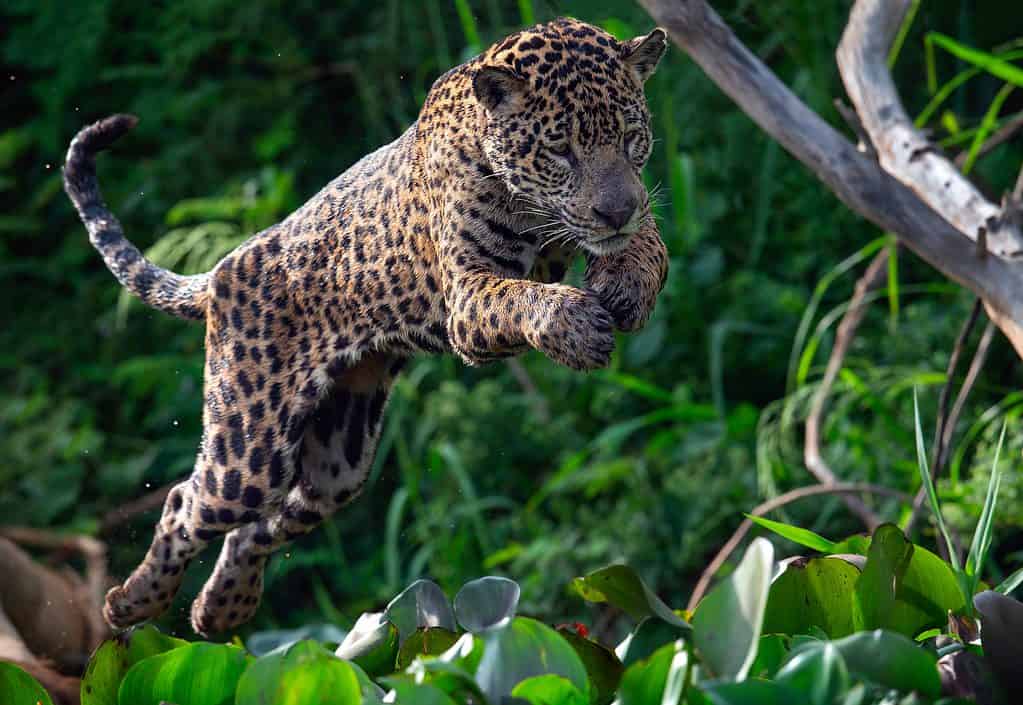
Jaguars are larger in their northern range.
©Sergey Uryadnikov/Shutterstock.com
Bigger jaguars can be found in the north than in the south. Jaguars are large, from their gigantic bulk to their hefty skulls. From nose to tail, a jaguar measures 240 cm. Males of reproductive age can reach 7 feet in length and weigh anywhere between 175 and 200 pounds! Females are up to 20% smaller than their male counterparts.
4. Jaguars Are Top Predators
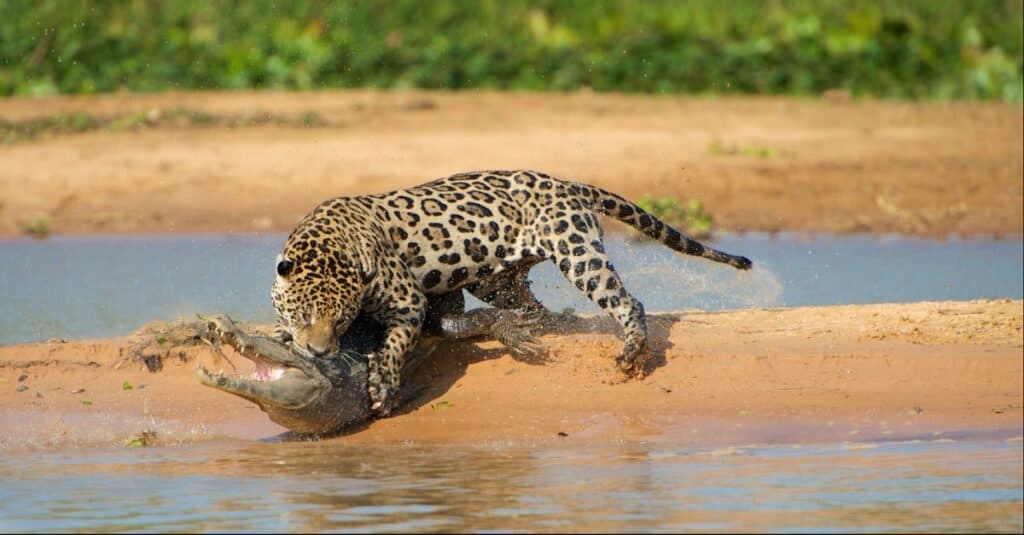
A Jaguar eats anything it wants.
©Gurkan Ozturk/Shutterstock.com
Jaguars are top cats in their kingdom with no natural predators, save an anaconda. While killing huge prey, the jaguar mostly uses its canine teeth. Even a single swipe from a jaguar’s paw can be fatal to its prey. Jaguars are dangerous if trapped, although they rarely attack people. However, any large mammal, including deer, tapirs, peccaries, sloths, monkeys, fish, reptiles, and even livestock, might end up on a jaguar’s menu.
Although they are considered carnivores, jaguars have occasionally been spotted eating avocados.
5. Jaguars Are Fearless, Intelligent Hunters
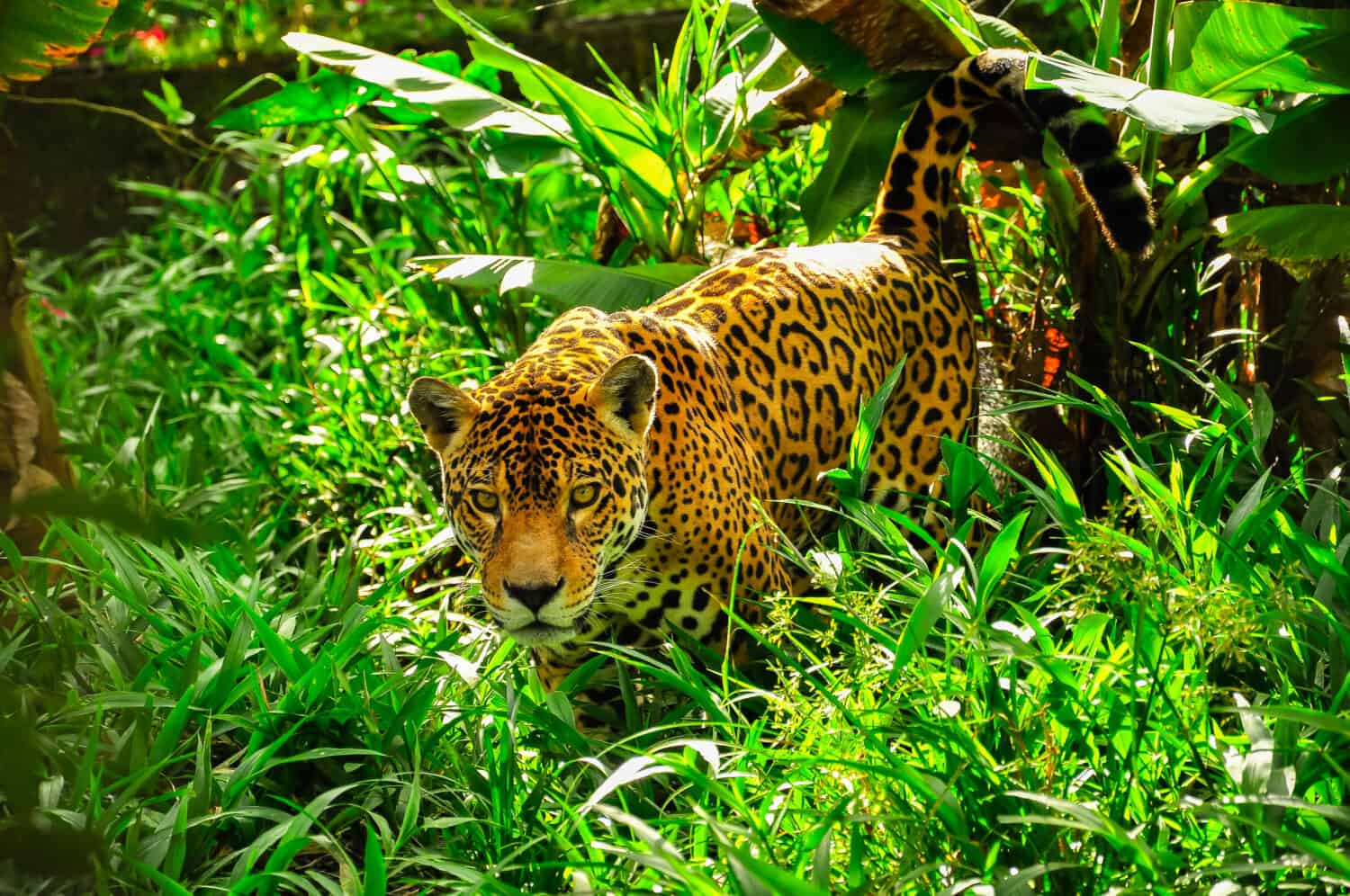
Jaguars can kill prey with one bite and possess the strongest jaws of any cat.
Image: Jo Reason, Shutterstock
©Jo Reason/Shutterstock.com
Jaguars are solitary cats that use their urine or tree claws to demarcate their territory. They are creative hunters that can hunt their prey in various ways. They can pounce on them in the treetops or even in the water. In contrast to most cats, they are not afraid of the water and fare quite well. They can even catch fish by dangling their tails in the water to attract them.
Jaguars have powerful jaws and sharp teeth. They are highly effective hunters with the ability to kill with a single bite. In fact, the jaws of a jaguar are the strongest of any of the cat species. Their jaws are strong enough to fracture bones, including skulls. Due to being solitary, when it comes to eating, jaguars are very territorial and do not like sharing their meals.
6. Jaguars Are Alone Unless Breeding Or Parenting
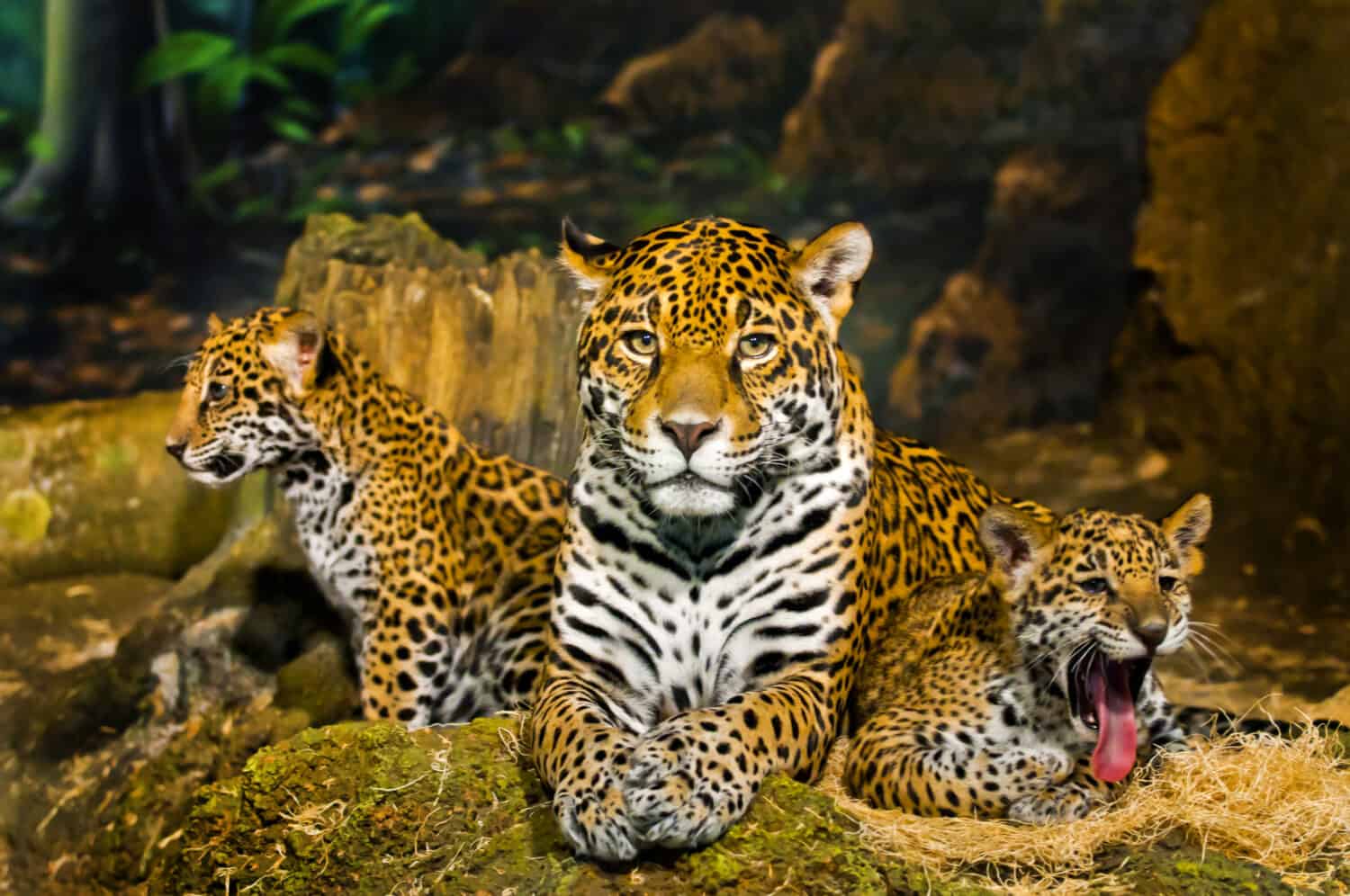
Jaguars are solitary cats that only interact during mating and when caring for their young.
Image: Kris Wiktor, Shutterstock
©Kris Wiktor/Shutterstock.com
Jaguars are solitary cats that only interact during mating and when caring for their young. When mating, both sexes will make a loud wailing sound. They have a continuous mating season. On average, a pregnancy will last between 93 and 105 days. After mating, the female gives birth to 2–5 young over the course of 100 days.
The cubs are weaned at three months of age. Cubs of three months of age are kept in the den to keep them safe from predators. After six months, the mother cubs will begin to teach their offspring how to hunt. Two years after birth, cubs begin to venture out on their own in search of food. In addition to providing food and a haven for his cubs, the father also teaches them how to defend themselves.
7. Jaguars Have Six Times Better Night Vision Than Humans
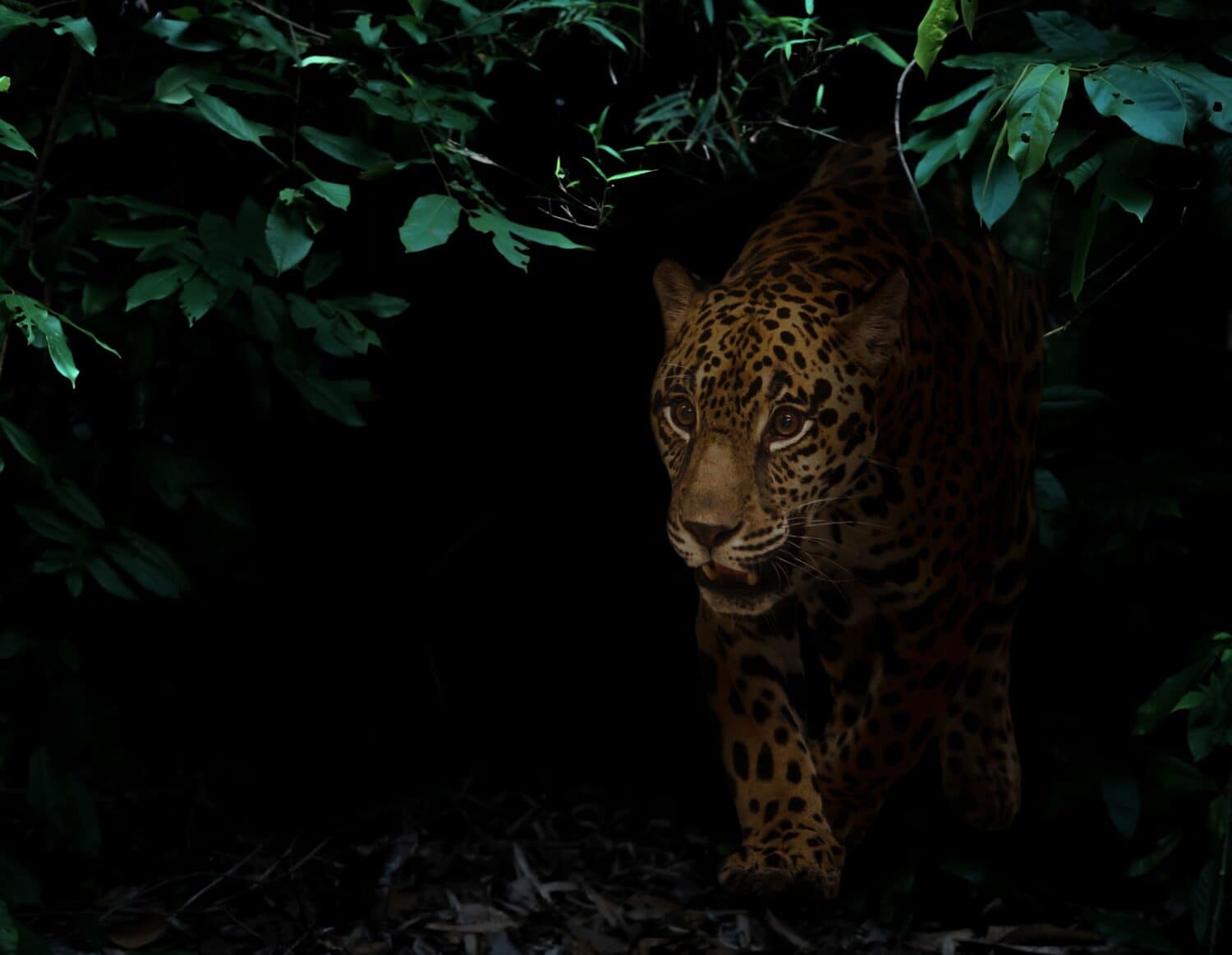
With their superior night vision – Jaguars prefer to hunt in darkness.
Image: Anan Kaewkhammul, Shutterstock
©Anan Kaewkhammul/Shutterstock.com
Since jaguars have reflective eye tissue, they can see quite well in the dark. Therefore, hunting at night is their preferred method of operation. However, this predator of the night won’t be sleeping all through the day.
Jaguars have been known to venture out for food when the sun is still shining. This, of course, depends on the scarcity of food in the region.
8. Jaguars Can Reach 80mph
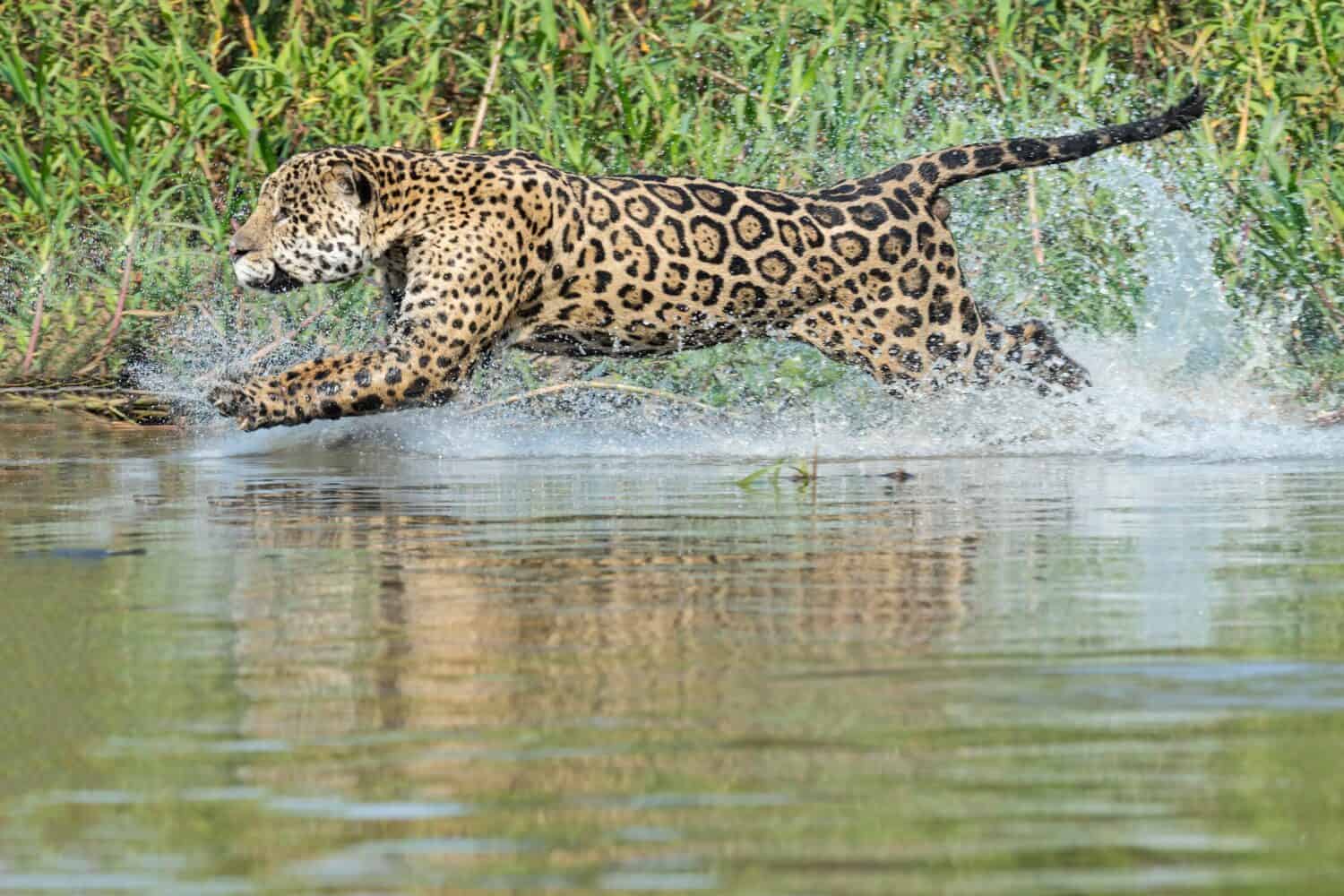
Jaguars can move quickly but cannot maintain their speed for extended periods.
Image: imageBROKER.com, Shutterstock
©imageBROKER.com/Shutterstock.com
Jaguars have been clocked at 80mph. They can move quickly but cannot maintain their speed for extended periods. Instead, their bigger hind limbs and short forelimbs enable quick movements like pouncing and jumping as optimal for hunting. Their ability to catch prey is aided by the long retractile claws on their front paws.
9. Fur Hunters Target Jaguars
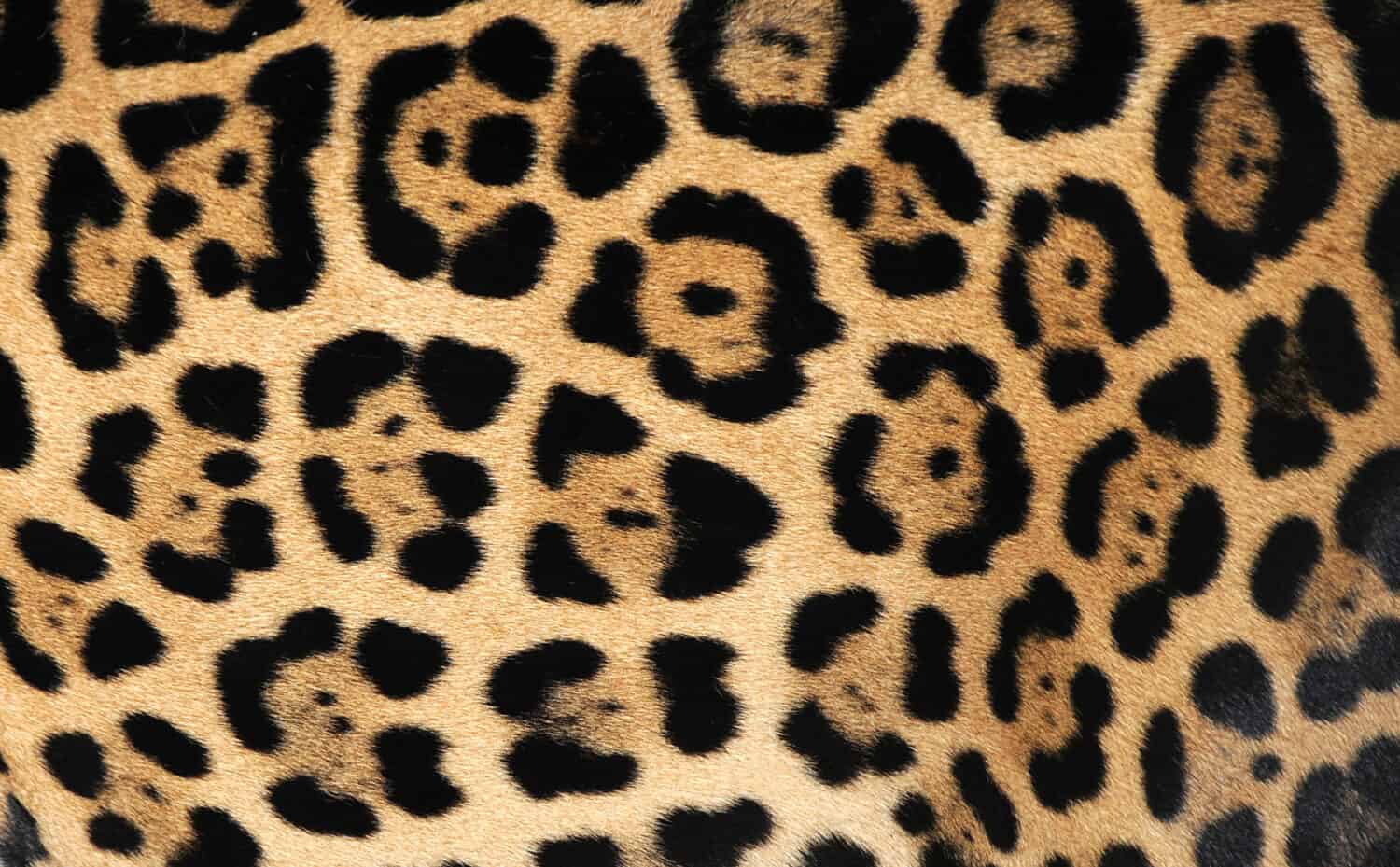
Jaguars’ gorgeous spotted coats make them vulnerable to the fur trade.
Image: worldswildlifewonders, Shutterstock
©worldswildlifewonders/Shutterstock.com
Jaguars face the greatest danger from humans. They are a popular target for hunters seeking fur. This results in a dramatic decrease in the number of jaguars in the wild. Because of this, jaguars are now considered a near-threatened species.
In the 1960s and 1970s, hunters killed 18,000 jaguars for their spotted fur. Damage to their habitat and deteriorating environments can play a role in reducing jaguar populations as well.
10. Jaguars Symbolize Power And Strength
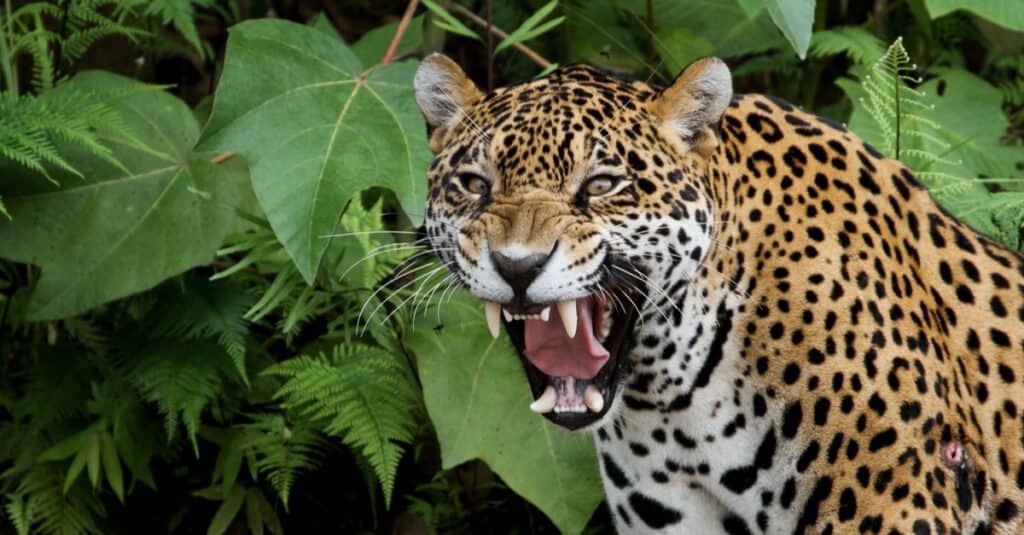
To many people, jaguars symbolize power and strength.
©Adalbert Dragon/Shutterstock.com
Jaguars have a solid reputation among animal lovers. They have played significant roles in human literature and music throughout history. To many, they symbolize power and strength. Some legends have the Jaguar God of the Night as the absolute ruler of the underworld.
The photo featured at the top of this post is © GoWildPhotography/Shutterstock.com
Thank you for reading! Have some feedback for us? Contact the AZ Animals editorial team.



